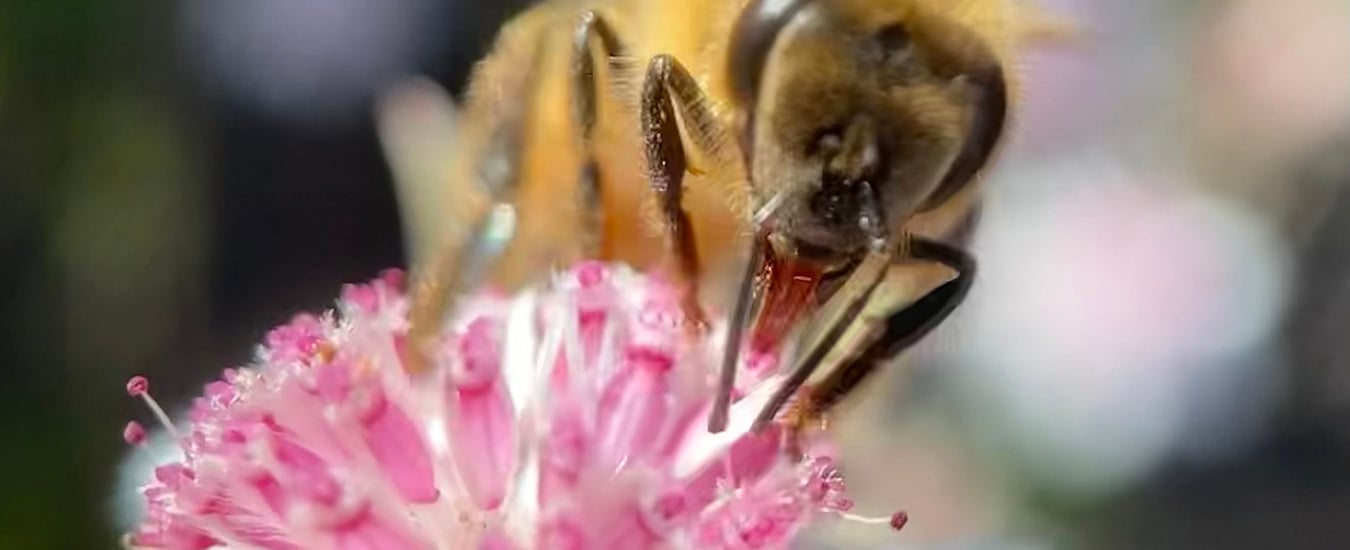In Australia, through the Plan Bee program, we are embarking on a journey to implement estimated breeding values to assist in genetic selection. This process has been successful in improving the productivity of other animal industries and the Australian honey bee industry is looking to emulate this success.
But outside of estimated breeding values there are other lessons we can learn from other industries.
One process that other industries excel at is the understanding of, and accounting for, inputs and outputs – the feed conversion ratio. That is, how much feed you put in to produce how much product. By understanding and selecting for this trait, farmers can maximise production while reducing costs. This is important to the viability of businesses and industries.
Honey bees are free-flying and thus it’s impossible to control what they’re eating. They forage on a wide variety of plants (if they are available in the environment). That’s a good thing, as they require a varied diet.

Honey bee on a pink flannel flower
(Image courtesy T Latty)
However, there are few plants that we have good nutritional data on. This data, comprising total protein, amino acid profile, sugar concentration, vitamin, and mineral content, is not available for most plants. This can be particularly difficult for native plants as they are so tall, making it difficult to sample them.
Nutrition is incredibly important.
Nutritional deficiency increases susceptibility to infection with Nosema and other microbial pathogens, and reduces brood and worker populations, lifespan, and age at first foraging. These will have knock-on effects on honey production and pollination efficacy.
Imagine a world where a pollination contractor knew that the first two crops of the season had the same nutrient deficiency. Knowing that, they could make better decisions about where to take their bees next, or possibly provide a supplement that will help keep their bees healthy. In addition, growers could make plantings to complement the nutrition shortfall in their crops and thus contribute to keeping pollinators healthy and strong while they do their important work.
The University of Sydney has awarded a SOLES Strategic Partnerships Seeding Grant to start investigating these questions. The team, led by Tanya Latty, will be looking at the protein and carbohydrate content and amount of pollen and nectar produced by plants in the Sydney Basin and investigate how fire changes plant nutrition for pollinators. Such work is fundamental in creating a system to better support honey bees and other pollinators through the provision of appropriate nutrition. If we don’t know what their diet is lacking, we can’t take steps to rectify the problem.
Acknowledgements:
- Branchiccela, Castelli, Corona, Diaz-Cetti, Invernizzi, Martinez de la Escalera, Mendoza, Santos, Silva, Zunino, Antunez (2019) Impact of nutritional stress on the honeybee colony health Scientific Reports 9: 10156
- Let it bee – improving our understanding of floral resources for insect pollinators in changed environments, Latty T, School of Life and Environmental Sciences (SOLES)/Strategic Partnership Seeding Grant
- This article was peer-reviewed by Tanya Latty and Tom Gillard.


